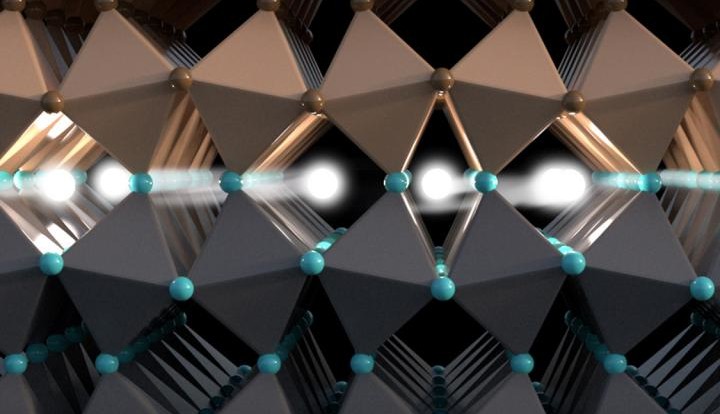Better current with spin electronics
February 22, 2017
on
on

The ongoing miniaturisation of electronics is expected to reach its limits in the near future. One of the limitations is the size of electrons that are needed in electronic circuits to transport charge from one place to the other, what we usually call ‘current’. To work around this problem a team of scientists from Munich and Kyoto proposes a way to make current “better”, by using the electron’s spin instead of its charge. Enter spin electronics.
It is hoped that the electron spin approach can increase the information density and, while doing so, increase the functionality of future electronics. The scientists have demonstrated the transport of spin information at room temperature in a test setup consisting of a sandwich of lanthanum-aluminate (LaAlO2) and strontium-titanate (SrTiO3). Its is in the boundary layer between the two materials where the magic happens. An extremely thin, electrically conducting layer forms at the interface between the two non-conducting materials — a two-dimensional electron gas — capable of transporting not only charge, but also spin.
The scientists solved the problem of spin transfer by using a magnetic contact. Microwave radiation forces the electrons into a wobbling precession movement that is conveyed onto the 2D electron gas. The electron gas then transports the spin information to a non-magnetic contact where the spin is absorbed, building up an electric potential in the process.
The next step is to find out how spin electronic components can be made for real.
It is hoped that the electron spin approach can increase the information density and, while doing so, increase the functionality of future electronics. The scientists have demonstrated the transport of spin information at room temperature in a test setup consisting of a sandwich of lanthanum-aluminate (LaAlO2) and strontium-titanate (SrTiO3). Its is in the boundary layer between the two materials where the magic happens. An extremely thin, electrically conducting layer forms at the interface between the two non-conducting materials — a two-dimensional electron gas — capable of transporting not only charge, but also spin.
The scientists solved the problem of spin transfer by using a magnetic contact. Microwave radiation forces the electrons into a wobbling precession movement that is conveyed onto the 2D electron gas. The electron gas then transports the spin information to a non-magnetic contact where the spin is absorbed, building up an electric potential in the process.
The next step is to find out how spin electronic components can be made for real.
Read full article
Hide full article


Discussion (0 comments)